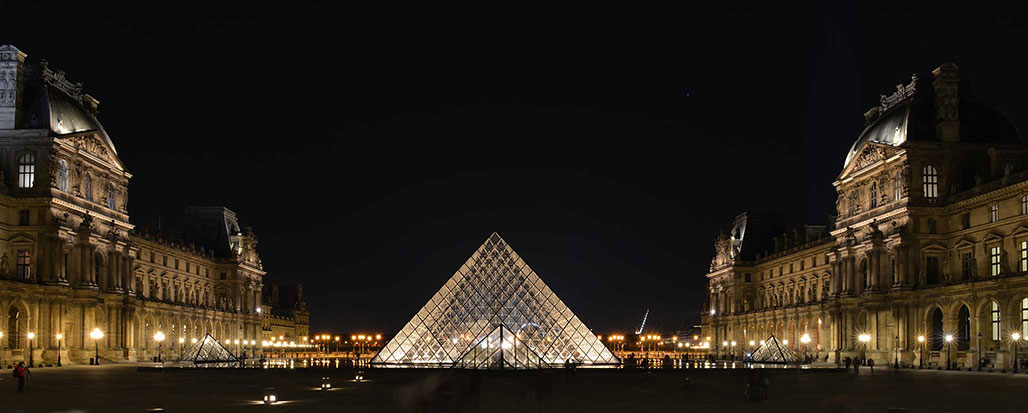Ken Chan
January 10, 2015
I think of crabs as being well-protected animals. Between their hard shells and sharp pinchers, I would never have imagined their low position in the food chain until I witnessed this atrocity. This poor crab was not victim to an otter or a stork, but the lowly seagull.
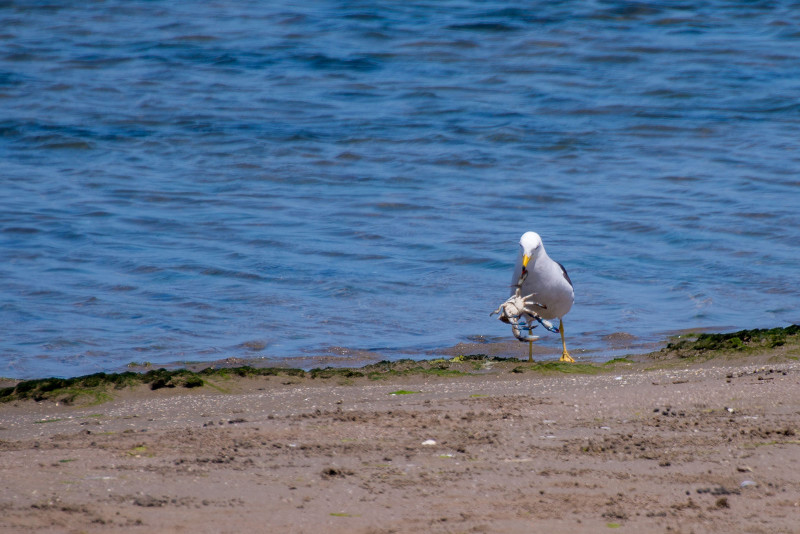
Nikon D800, Nikkor AF-S 28-300mm f/3.5-5.6G ED VR, ISO 110, 300mm, f/5.6, 1/640s
Sure, the gull may have a strong grip on one of the crab’s legs, but how will it break the shell? Unfortunately for the crab, the answer was gravity. Give the crab a lift and let go.
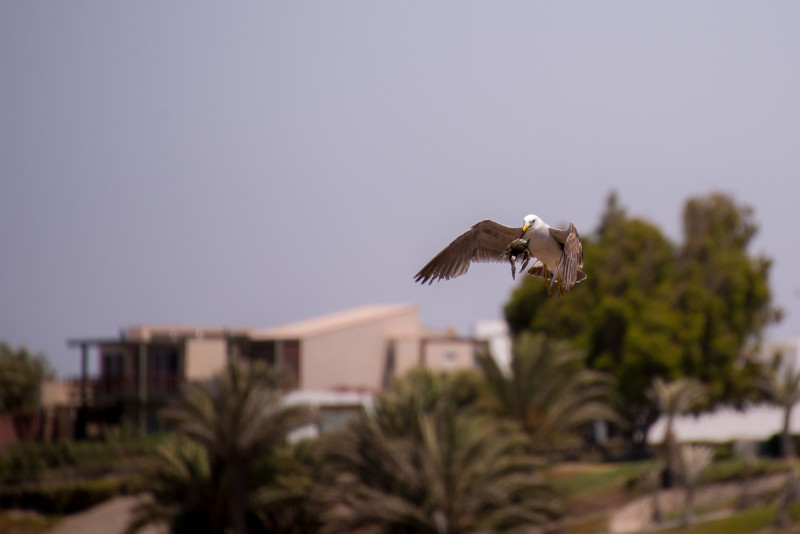
Nikon D800, Nikkor AF-S 28-300mm f/3.5-5.6G ED VR, ISO 100, 300mm, f/5.6, 1/640s
Yes, seagulls are violent, vicious killers. Some food for thought the next time you see a seagull circling above.
I had woken up early in Cusco to explore the Plaza de Armas. The previous night, this square was bustling with people coming and going to restaurants and nightclubs. Surrounding the historical center of Cusco, the homes on the foothills were glistening like Christmas lights strung around the city. The experience was absolutely magical.
This morning, the city was quiet and contemplative. At first, the sky was a rich, dark blue. As the last traces of night ebbed into day, the sky lightened. A touch of lingering sunlight illuminated the clouds with yellow and orange hues. A new day had begun.
The clock on the cathedral wall was pointing at 6 o’clock. Most of the city was still asleep, but I was in the square soaking up the radiance of the morning light.
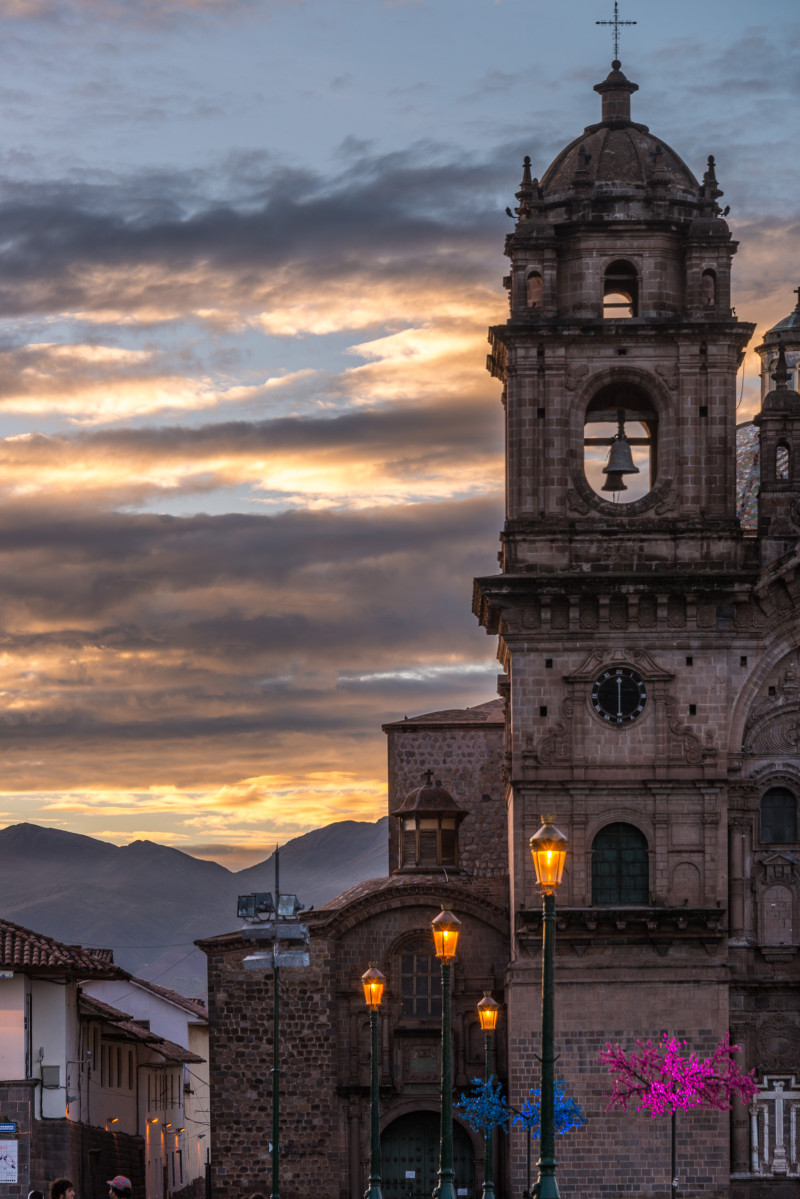
Not sure if it was a bout of foolishness or naiveté, but I thought it would be interesting to travel with one lens. So, with a Nikon AF-S 28-300mm lens, I headed out to Peru. For one lens, it wasn’t a bad choice, but I did not go through the entire thought process carefully.
My preliminary thought was that at dawn or dusk, I would be using a tripod anyways, so I did not need a fast lens. Generally, that is true, except for one outlier situation: astrophotography. I immediately recognized my error when setting up my camera.
To compound the problem, I did not have my regular tripod for this photo. That mistake, to never be repeated, would be placing the tripod in checked luggage, which the airline could not locate for four days. Fortunately, I could make do with my table top tripod. The set-up was seriously constrained, but it was better than nothing. As it turned out, the night I took this photo was the only clear night at that location. I have been using Clear Dark Sky to predict optimal viewing conditions, but their dataset is limited to North America. 7 Timer provided me with the astro data for Peru.

Nikon D800, Nikkor AF-S 28-300mm f/3.5-5.6G ED VR, ISO 1,600, 28mm, f/3.5, 30.0s
Ken Chan
December 3, 2014
It’s been two years since I first (and last) saw the Milky Way. I miss it. I’m sure I’ll have another opportunity, but I’m not exactly sure when. It’s certainly a lot closer than traveling to Paris or Venice, but heading out to a remote part of the world requires some coordination of schedules. At times, I’m a bit envious of those who can step out into their backyard and view the Milky Way or an Aurora Borealis.
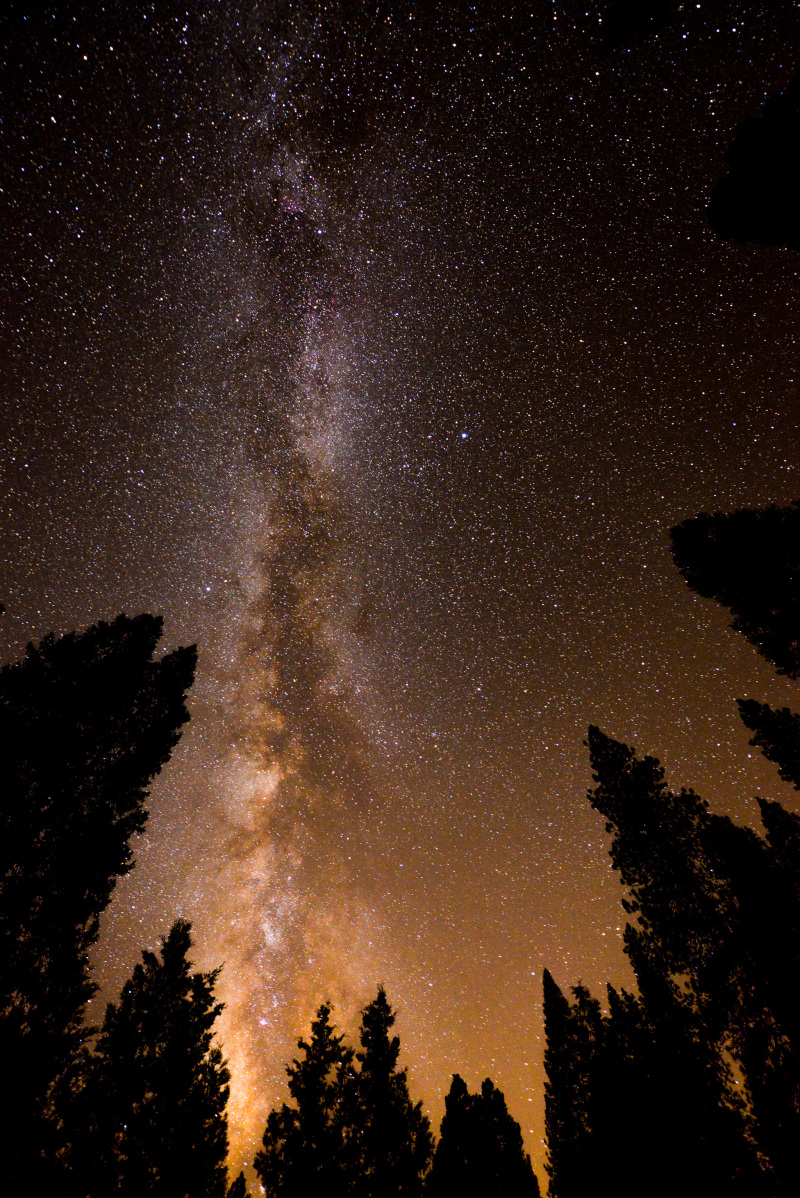
Ken Chan
November 19, 2014
I was out in the Palo Alto Baylands around sunset taking photos near the Lucy Evans Badlands Nature Interpretive Center. By pure happenstance, I followed a trail around the bay that took me to this view of the Palo Alto airport. At first, I was focused on the sunset. However, I thought it would be neat to capture a plane landing in front of the setting sun.
This vista would probably be even more glorious at high tide. Thursday, November 27 looks good. 4:17 PM high tide with a 4:51 PM sunset. Unfortunately, that’s Thanksgiving day. Maybe in December.

Nikon D800, AF-S VR Micro-Nikkor 105mm f/2.8G IF-ED, ISO 400, f/5.6, 1/1,000s
Ken Chan
November 13, 2014
We had a touch of rain in the last 24 hours, but far from enough to call an end to the drought. At noon, I checked the weather before heading out. Since the skies were full of voluminous (and ominous) clouds, I turned to the Weather Channel, which reported dry skies for the rest of the day. Good enough for me. I promptly headed out with camera in hand.
From Vista Slope, I could see broad swaths of trees changing colors with the Fall season. I love the fall palette of yellows, oranges and reds filling the trees with a last burst of color. The field below is a private soccer field for Google employees.
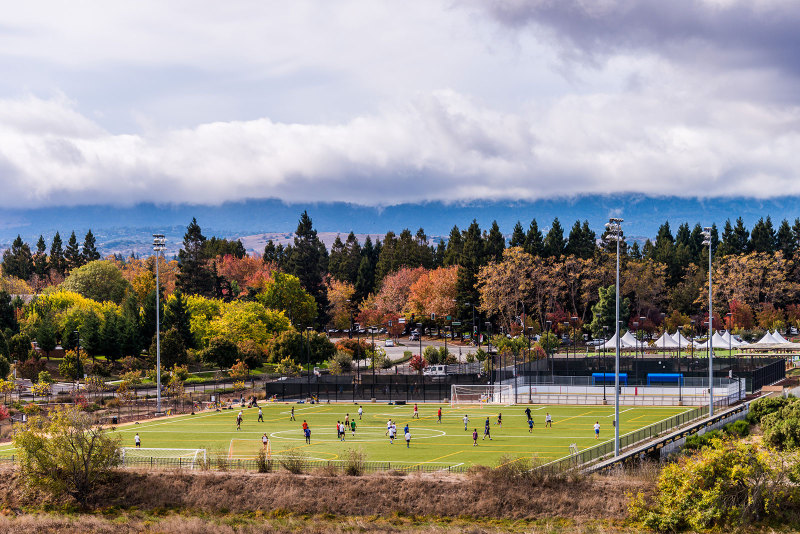
Nikon D800, Nikkor AF-S 28-300mm f/3.5-5.6G ED VR, ISO 100, 98mm, f/5.6, 1/500s

Ken Chan
November 13, 2014
Sunsets in Venice can be glorious. I really love how the last rays of orange sunlight shimmer and dance across the waters of the blue lagoon. Alas, I do not live in Venice. Instead of waiting for the next opportunity to travel overseas, I discovered that I can still refine my photographic skills by incorporating photography into my daily routines.
Instead of going out for lunch, I take a short walk with the camera in tow. Most of the time, nothing interesting happens. But, I sometimes encounter interesting birds and planes. If the weather is cloudy, I experiment with taking photos of clouds. During the winter, night comes early, so I test out sunset, night and long exposure photographs. All good practice in anticipation of the next trip.
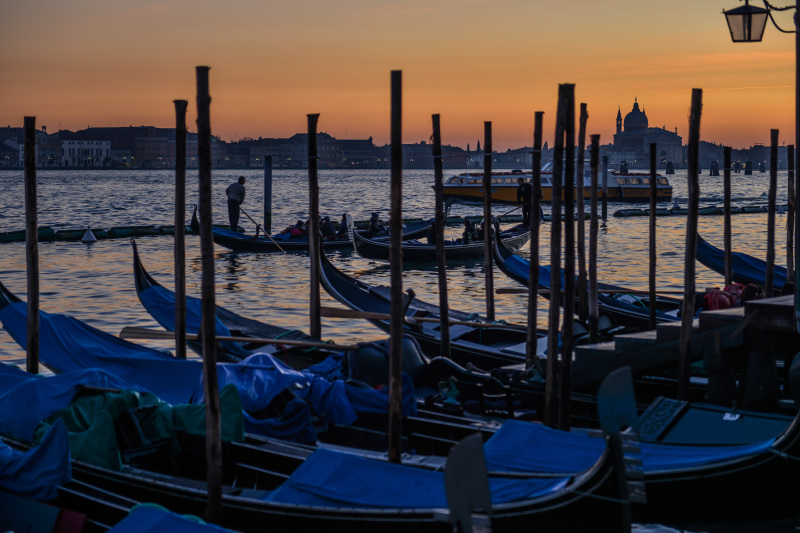
Nikon D800, Nikkor AF-S 24-70mm f/2.8G ED, ISO 100, 70mm, f/2.8, 1/40s
Ken Chan
November 4, 2014
Last week, sunset was at 6:00 PM. Today, it was closer to 5:00 PM. Too bad we couldn’t just fall back 30 minutes. A 5:30 PM sunset would be perfect. By the time I was able to set-up this evening, the sun was well below the horizon. However, the moon was just rising, so I headed for the closest body of water hoping for some reflections.
To the naked eye, the details of the moon and the surrounding landscape are clear. But, if you expose for the moon, the landscape will be black. And, if you expose for the landscape, the moon will be blown out with no recoverable details. Even with a graduated filter, I couldn’t expose both properly in one shot.
The solution is to take two photos: one exposing for the moon and one for the background. Before, I had always attempted to use HDR software to automatically blend the multiple exposures, but I never received any promising results. Today, it suddenly dawned on me to blend the two photos manually. In the bottom layer, I have the photo exposed for the background. In the top layer, I have the photo exposed for the moon. I delete the blown out moon (with a content aware fill) from the bottom layer, which leaves me with a background with no moon. In the top layer, I set the blend mode to screen so that the moon and landscape are both properly exposed.

Nikon D800, AF-S Nikkor 24mm f/1.4G ED, ISO 100, f/8, 6.0s
Ken Chan
November 2, 2014
I headed to Stanford University on a cold and wet Saturday morning. It had rained on and off, and I was hoping for some glistening, reflective pavement. Not sure if the drainage was too good, or I headed out too late. By the time I set foot in the Quad, the tiles were mostly dry.
I really like the PC-E lens, but if I haven’t used it a quite some time, it takes a moment to re-orient myself because the controls are different. For example, spinning the dial to change the aperture has no effect. I had to remember to use the aperture ring instead.
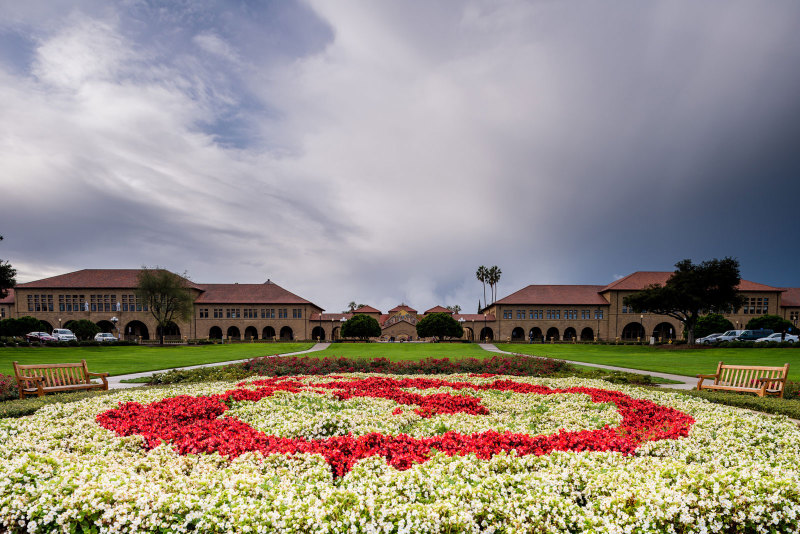
Nikon D800, PC-E Nikkor 24mm f/3.5ED, ISO 100, 24mm, f/8.0, 1/400s
Ken Chan
October 28, 2014
Next week, the sunsets will come an hour earlier. This will be a prime chance to take some sunset photos after work. A few weeks later, it’ll be pitch black when I step out in the evening. Maybe I will return to photographing the moon then.



